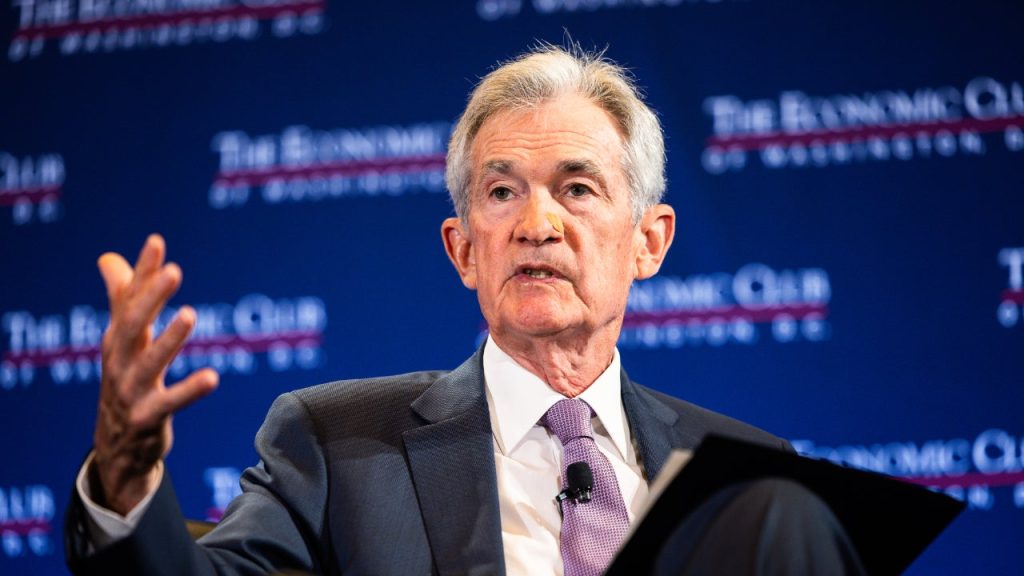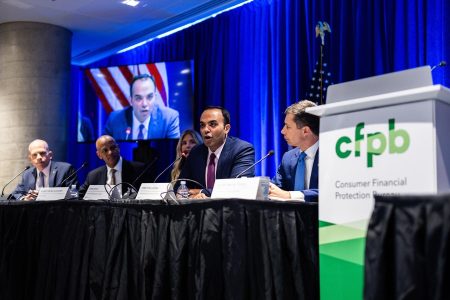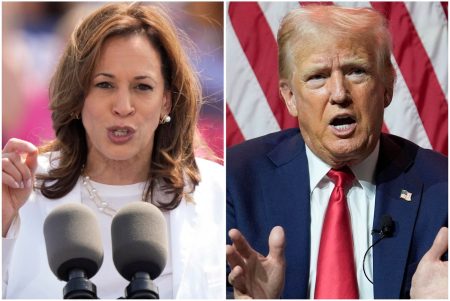The Federal Reserve announced that it’s holding interest rates steady following its July 30-31 meeting, leaving the federal funds rate at a target range of 5.25 to 5.5 percent. It’s the ninth time in the last 10 meetings that the Fed has left rates unchanged, though the central bank has raised rates a total of 11 times during this economic cycle in an effort to tamp down high inflation.
The Fed’s decision comes as inflation hit 3 percent year-over-year in June, after reaching the highest levels in decades at over 9 percent in mid-2022. The last time the Fed raised rates was at its July 2023 meeting. Now with inflation moving toward the Fed’s target of 2 percent, many market watchers expect the central bank to lower rates at its next meeting in September.
“The long-awaited start to interest rate cuts is right around the corner,” says Greg McBride, CFA, Bankrate chief financial analyst. “Inflation is trending down and the economy is cooling, both of which align with the Federal Reserve beginning to cut interest rates in the coming months.”
“The Fed is expected to cut interest rates into and throughout next year as well, hoping to strike that balance between rates that are high enough to keep inflation at bay but not so high as to choke off economic growth,” says McBride.
At about 4.14 percent, the 10-year Treasury note has risen from the start of the year, even if it’s down from its 52-week high of 4.99 percent, which was hit in October. The yield plummeted at the end of 2023, but picked up as Fed officials talked back the timeline for lowering rates in 2024 and the market pushed out its expectations for a move.
Here are the winners and losers of the Fed’s latest rate decision.
1. Savings accounts and CDs
The Fed’s multi-month pause on adjusting interest rates has meant that many banks have also paused changing rates on their savings, CDs and money market accounts, while many others have been actively paring them back in anticipation of the Fed lowering rates in the future. Still, many banks are keeping their rates at high levels, a boon for savers.
“The good news for savers is that high-yield savings accounts will continue to outearn inflation for the foreseeable future,” says McBride. “Even as rates decline, savers will be light years ahead of where they were as recently as 2021.”
Savers looking to maximize their earnings from interest should consider turning to online banks or the top credit unions, where rates are typically much better than those offered by traditional banks.
When it comes to CDs, account holders who recently locked in rates will retain those yields for the term of the CD, unless they’re willing to pay a penalty to break it.
With rates likely to only fall from here, it may be a good time to lock in longer maturities on CDs, especially those in the 2-year to 5-year timeframe while they remain relatively high.
“If you’ve been thinking about locking in a CD, wait no longer,” says McBride. “Now is the time to act, grabbing yields that are among the best in more than 15 years but are poised to move lower in the coming months. Waiting offers no benefit, as yields will decline as the Fed begins cutting rates.”
2. Mortgages
While the federal funds rate doesn’t really impact mortgage rates, which depend largely on the 10-year Treasury yield, they’re often moving the same way for similar reasons. With the 10-year Treasury yield falling to end 2023 and then moving higher in the first half of 2024, mortgage rates have gone along for the ride, though they’ve slipped in recent weeks.
“Mortgage rates have moved below the 7 percent mark and are poised to move lower through the rest of this year and into next,” says McBride. “We’re not going back to 3 percent mortgage rates, but continued declines will spur demand and provide a boost to buyer affordability.”
Mortgage rates remain well above where they were a couple of years ago, and this – following the rapid rise in housing prices over the recent past – has created a double whammy for potential homebuyers. Home prices are more expensive and the financing is pricier, resulting in a slowdown in the housing market.
The cost of a home equity line of credit (HELOC) should remain flat since HELOCs stay aligned with changes in the federal funds rate. HELOCs are typically linked to the prime rate, the interest rate that banks charge their best customers. Those with outstanding balances on their HELOC will likely see rates stay close to where they are currently, but it can still be a good time to shop around for the best rate.
3. Stock and bond investors
The stock market soared as long as the Fed kept rates at near zero for an extended period of time. Low rates were beneficial for stocks, making them look like a more attractive investment in comparison to rates on bonds and fixed-income investments such as CDs.
“The stock market has cheered the prospect of lower rates since the Fed’s first hint last fall that they were done raising rates,” says McBride.
“What will be important to investors going forward is why the Fed cuts rates,” he says. “If it’s to keep the economic expansion on track as inflation diminishes, this will be a positive for the market. However, if the economy slows sharply and the Fed is playing catch up by cutting rates, it will make for a bumpy road ahead.”
So, with the economy yet to endure a recession and stock valuations at elevated levels, stock investors may still be in for a choppy ride.
Higher rates hit bonds hard, and the longer the bond’s maturity, the more it’s stung by rising rates. However, with a long rate pause and the potential for lower rates in the future, those putting new money into bonds should like what they’re seeing. If and when rates fall, fixed-income investors will benefit as bond prices move higher.
“Bond investors can lock in attractive coupons now and see price appreciation as interest rates come down, but the trade-off is that reinvesting those returns will come at lower rates,” says McBride.
Short-term rates remain attractive if you’re looking for a safe place to stash money while waiting for things to cool off.
4. Borrowers
If you’re an existing borrower and don’t need to tap the market for money – say, you previously locked in a 30-year fixed-rate mortgage in 2021 or 2022 – you’re in good shape. But even with the rate pause, everyone else who’s looking to access new credit is still squeezed, whether that’s credit cards (more later), student loans, personal loans, auto loans or whatever else you might need to borrow for.
The average interest rate on personal loans is 12.36 percent, as of July 24, according to a Bankrate analysis, so the rate pause will likely slow upward pressure on rates there. However, borrowers with better credit may still be able to access a lower rate. In 2021, the average rate was just 9.38 percent, when the fed funds rate was near zero.
Besides these new borrowers, however, anyone with floating-rate debt is breathing a sigh of relief with the Fed’s decision. Still, you may have an older loan that’s resetting at this year’s higher rates. For example, if you took out an adjustable-rate mortgage years ago, that loan may be resetting at higher rates and it may be pushing up your monthly payment, just not as high as it would be if the Fed had raised rates.
5. Credit cards
Many variable-rate credit cards change the rate they charge customers based on the prime rate, which is closely related to the federal funds rate. The Fed’s decision means that interest on variable-rate cards should remain more or less steady for now. Rates on cards are already at multi-decade highs and rose as the Fed sharply raised rates.
“Prioritize repaying high-cost credit-card debt and utilize a zero percent or other low-rate balance-transfer offer to give those debt repayment efforts a tailwind,” says McBride. (Here are some of the top balance-transfer cards to consider.)
Rates on credit cards are largely a non-issue if you’re not running an ongoing balance.
6. The U.S. federal government
With the national debt topping $35 trillion, a forthcoming change in the direction of rates will at least temporarily relieve some pressure on the borrowing costs of the federal government as it rolls over debt and borrows new money. That said, the government’s total borrowing costs continue to rise as older debts at lower rates must be rolled over at today’s higher interest rates.
Of course, the government has benefited for decades from a secular decline in interest rates. While rates might rise cyclically during an economic boom, they’ve been moving steadily lower long term.
As long as inflation remained higher than interest rates, the government was slowly taking advantage of inflation, paying down prior debts with today’s less valuable dollars. That’s an attractive prospect for the government, of course, but not for those who buy its debt. Now, with interest rates higher than inflation, the tables have turned, and the government is repaying debt with today’s more costly dollars.
With 2024 being a hotly contested election year, the surging debt and its high carrying cost may impact the results.
Bottom line
Inflation ran hot over the last couple of years, but with already-high rates and a clear cooling in inflation, the Fed has decided to leave rates steady for now. Smart consumers can take advantage, for example, by being more discriminating when it comes to shopping for rates on savings accounts or CDs. It can be a good time to lock in longer-term rates on CDs or even get a good balance-transfer credit card.
Read the full article here
















